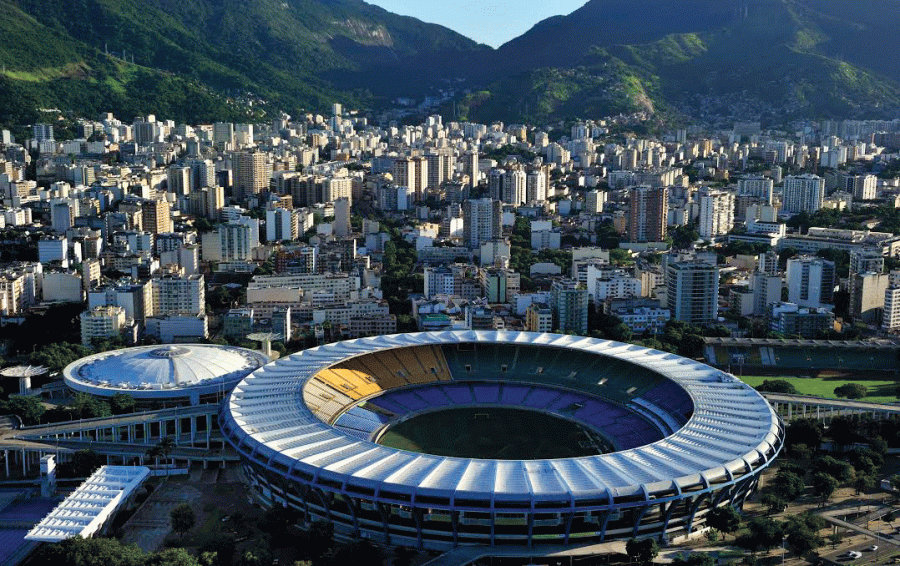The Impact of ‘Mega-Events’ on Rio De Janeiro
Professor Brian Godfrey analyzes the economic, political and infrastructural effects of the World Cup and the 2016 Summer Olympics on the Brazilian metropolis, pictured here.
Professor of Geography at Vassar College Brian Godfrey visited Colgate on Tuesday, October 18 to discuss the effects of major athletic events, such as the Olympics and the World Cup, on the city of Rio de Janeiro, Brazil.
In his presentation, Godfrey attempted to answer the question of whether or not these so-called “mega-events” were beneficial to the country of Brazil. He informed the audience of the ways in which these mega-events could create a beneficial economic legacy in Rio de Janeiro.
“There [is a] legacy of future growth that is made possible through the creation of new infrastructures, real-estate and re-branding in preparation for mega-events,” Godfrey said.
Godfrey noted that Barcelona and London experienced similar trends in growth after hosting the Summer Olympics in 1994 and 2012, respectively.
Throughout his presentation, Godfrey emphasized that the World Cup and the Olympics were very important in the case of Brazil because of its current political crises. As Brazil dealt with the impeachment of Brazilian President Dilma Rousseff, an economic recession, a scandal surrounding Brazil’s state-owned oil company and a great decline in both exports and trade, the Olympics and the World Cup presented opportunities for Brazil to internationally showcase its progress and ability to overcome these issues.
Godfrey then stated there were three main political and economic outcomes involved in Brazil hosting these mega-events. These outcomes are the increased media spotlight provided by the mega-events, the additional leverage created by the need of officials to successfully pull off these events and new development that will depend on attracting international tourism after the mega-events conclude.
To evaluate the legacy of the mega-events on Rio de Janeiro, Godfrey focused on five major areas: construction and finances, transportation projects, ecology and environmentalism, inclusion and social justice and, finally, imaginary and collective memory.
In the area of construction and finances, Godfrey gave Rio De Janeiro a “B+,” as he noted the demand of finances for the venues was incredibly high. Godfrey also highlighted some particularly important changes to the city’s infrastructure and economy.
“One of the best parts of the mega-events was the new transportation projects [completed throughout Rio],” Godfrey said.
Godfrey emphasized the building of the Light Rail, a new public transportation system in Rio and also the opening of new roads, such as the well-known
Broad Boulevard.
Overall, Godfrey stated that, due to the varied effects of these mega-events, Rio de Janeiro received a “B” in terms of the legacy that the World Cup and
Olympics will have on the nation.
While there were some negative effects on the country due to these events, they provided Brazil with the right platform in order to give itself a new name.
Sophomore Meg Jackman attended the event for a Latin American studies course and spoke to the usefulness of Godfrey’s analysis of the effects of mega-events on Brazil.
“For class, we had recently viewed a film of a family who moved out of their home in Rio due to the mega-events,” Jackman said. “It was interesting to see the statistics and graphics behind these events that affect many families.”







